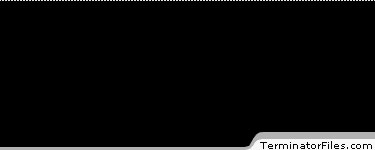Robots That Spark Your Imagination
Interestingly enough, the history of robotics officially began with the 1921 play R.U.R. (Rossum's Universal Robots) by Czech writer Karel Capek. The term "robot" originates from the Czech word robota, which means "forced labor."
Robots are a part of everyday life, not just figments of the imagination. Today, we have robots performing a great number of tasks that include repetitive and high-stress jobs such as car assembly, medical surgery, space and deep-sea exploration, dangerous military and police applications, and even entertainment.
But besides the occasional Asimo, lifelike hostess robots, and multimillion-dollar robotic fish, most of them are a bit boring. And you will never hear the best lines in science-fiction robot history uttered by any of them.
The famous line, "I'll be back," by the formidable Terminator robot from the future played by Arnold Schwarzenegger comes second only to "Danger! Danger, Will Robinson!" uttered by B-9, a robot in the science-fiction series Lost in Space.
For that matter, it is Robby the robot, first appearing in the feature film Forbidden Planet (1956), who is credited as the most influential robot of all time. Robby forever changed how the world would perceive robots. His design had a great impact on the toy market and is credited as being the first movie prop to be heavily merchandised for both children and adults.
After all, any child would be instantly fascinated by the idea of a mechanical friend or fiend. That is because robots universally and naturally spark curiosity in children, and they carry that fascination right up to adulthood.
Also, movie robots spark the imagination for a lot of aspiring scientists and engineers. Programs and competitions on robotics such as Robocon are perhaps the catalysts to having childhood dreams of real-life movie robots become a reality.
Interestingly enough, the history of robotics officially began with the 1921 play R.U.R. (Rossum's Universal Robots) by Czech writer Karel Capek. The term "robot" originates from the Czech word robota, which means "forced labor."
However, the official definition of a robot, according to The Robot Institute of America, is "a reprogrammable, multifunctional manipulator designed to move materials, parts, tools, or specialized devices through various programmed motions for the performance of a variety of tasks." Unfortunately, not only does this make robots boring, it also limits the imagination.
Isaac Asimov, dubbed the Father of Robotics by some, used the word "robotics" in a short story, Runaround (1942), which later became a part of the famous book I, Robot. Asimov's depiction of robotics is essential to the robot-science-fiction genre because of two things: the "positronic brain" idea, as used by Data in Star Trek: The Next Generation, and the three fundamental laws of robotics.
- Law 1:
A robot may not injure a human being, or through inaction, allow a human being to come to harm, unless this would violate a higher order law.
- Law 2:
A robot must obey orders given to it by human beings, except where such orders would conflict with a higher order law.
- Law 3:
A robot must protect its own existence as long as such protection does not conflict with a higher order law.
Asimov then added a fourth "Zeroth Law," where a robot may not injure humanity, or through inaction, allow humanity to come to harm.
These laws are time and time again confounded in movies to give the sinister scenarios of machines rising up against their masters, the humans. Why? Because not only it is fun, it also piques the imagination.
Robots That We Love and Love To Hate
In the 1960s:
- In Lost in Space, B-9 the robot was also a bodyguard, cook, friend and clown.
- In Dr. Who, the evil Daleks were robots bent on world domination and enslaving humans.
- 2001: A Space Odyssey was instrumental to the modern genre of machine against man.
In the 1970s:
- In Futureworld, robots plotted to replace human life.
- Star Wars featured R2-D2 and C-3PO. Both became the second-most influential robots in history after Robby.
In the 1980s:
- The Terminator had humans fighting against machines for a future that had humans almost totally decimated.
- Short Circuit had Johnny 5, a former military robot, which was zapped by electricity and developed the ability to think and feel: "Johnny 5 is alive!"
- The Transformers were robot life-forms from a faraway planet that crashed and continued their war on Earth. The warring factions Autobots and Decepticons could transform themselves into useful objects such as vehicles and weapons as a form of martial arts.
- Robocop portrayed the dark near future cybernetic organisms with part-man, part-machine cop with the famous line, "Dead or alive, you're coming with me!"
In the 1990s:
- More Robocop movies, Terminator 2 and several other Cyborg movies.
- There were also some notable robot scenes in Judge Dredd, Austin Powers and The Fifth Element.
This decade:
- I, Robot had Will Smith in a movie based on Asimov's short story.
- AI: Artificial Intelligence featured an android desperately wanting to become a real boy.
- Animated flick Robots had an all-star voice cast.
Look out for the movie remake of the cult Transformers series with live action and CGI due next year.

